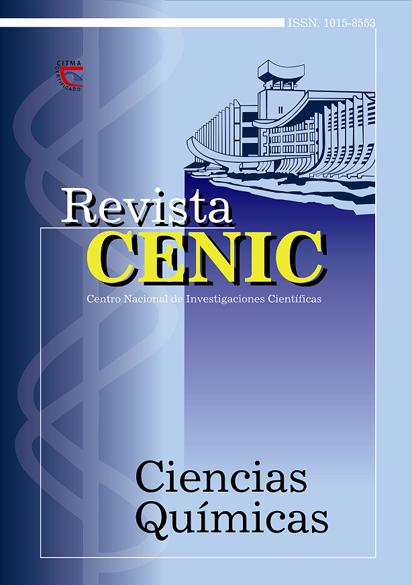Use of the alternating current harmonics technique in the study and comparison corrosion on reinforcing steel
Abstract
The harmonic alternating current technique has not been used in corrosion studies in the reinforcing steel or
other metallic material against an aggressive environment in Cuba. The main objective of this paper was to demonstrate
that the alternating current harmonic technique can be used in the study and comparison of the reinforcement steel
corrosion. A comparison between the corrosion potential obtained with this technique and steady corrosion potential, as
well as between the corrosion rate obtained electrochemically and the direct measurement from the weight loss in the
reinforcement steel in six probes of reinforcing concrete, was carried out. These probes of three different water/cement
ratios were subjected to weather conditions and full immersion. Both conditions enabled the direct influence of chloride
ions during three years of exposure. The results showed that the alternating current harmonic technique can be used in
the study and comparison of reinforcing steel corrosion under chloride ion influence. The corrosion rate values obtained
allowed demonstrating according to comparative statistical analysis that the factors that more could influence in the corrosion
of reinforcing steel are the aggressive environment and its interaction with the water/cement ratio.

Downloads
Published
How to Cite
Issue
Section
License

This work is licensed under a Creative Commons Attribution-NonCommercial-ShareAlike 4.0 International License.
Los autores que publican en esta revista están de acuerdo con los siguientes términos:
Los autores conservan los derechos de autor y garantizan a la revista el derecho de ser la primera publicación del trabajo al igual que licenciado bajo una Creative Commons Atribución-NoComercial-CompartirIgual 4.0 que permite a otros compartir el trabajo con un reconocimiento de la autoría del trabajo y la publicación inicial en esta revista.
Los autores pueden establecer por separado acuerdos adicionales para la distribución no exclusiva de la versión de la obra publicada en la revista (por ejemplo, situarlo en un repositorio institucional o publicarlo en un libro), con un reconocimiento de su publicación inicial en esta revista.
Se permite y se anima a los autores a difundir sus trabajos electrónicamente (por ejemplo, en repositorios institucionales o en su propio sitio web) antes y durante el proceso de envío, ya que puede dar lugar a intercambios productivos, así como a una citación más temprana y mayor de los trabajos publicados (Véase The Effect of Open Access) (en inglés).













